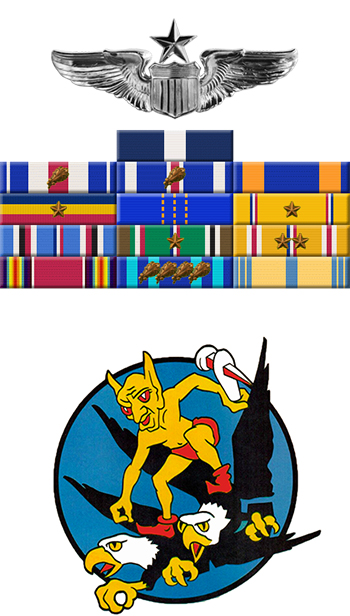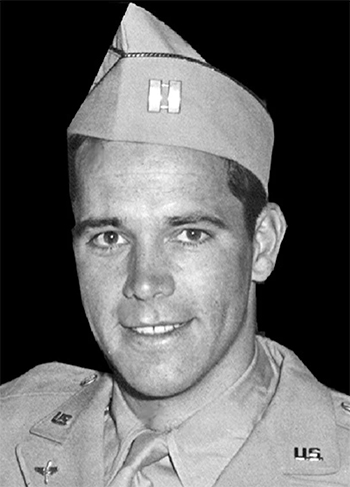
|
Thomas G. "Tom" Lanphier, Jr. |
 |
|||
| Rank, Service | ||||
Colonel O-6, U.S. Air Force |
||||
| Veteran of: | ||||
|
||||
| Tribute: | ||||
Tom Lanphier was born on November 27, 1915, in Panama City, Panama. He graduated from Stanford University in Palo Alto, California, with a Bachelor's Degree in Journalism in 1937, and later enlisted in the Aviation Cadet Program of the U.S. Army Air Corps on March 15, 1941. Lanphier was commissioned a 2d Lieutenant in the U.S. Army Air Forces and awarded his pilot wings at Stockton Field, California, on November 1, 1941, and then joined the 70th Pursuit Squadron of the 35th Pursuit Group as a P-40 Warhawk pilot at Hamilton Field, California. He deployed with the newly renamed 70th Fighter Squadron to Fiji in January 1942, serving as a P-39 Airacobra pilot there until he transferred to the 339th Fighter Squadron of the 347th Fighter Group on Guadalcanal in December 1942. Capt Lanphier transitioned to the P-38 Lightning with the 339th Fighter Squadron, and was credited with the destruction of 4.5 enemy aircraft in aerial combat during April 1943. He participated in Operation Vengeance, the mission to shoot down Japanese Admiral Isoroku Yamamoto, on April 18, 1943, for which he was awarded the Navy Cross. He returned to the United States shortly after Operation Vengeance, and was promoted to Major in November 1943. Major Lanphier deployed to Europe and flew several missions to test new tactics in May 1944, and he was promoted to Lieutenant Colonel in February 1945. Lt Col Lanphier served as Director of Operations with the 72nd Fighter Wing at Peterson Field, Colorado, during the last year of World War II. He left active duty and joined the Air Force Reserve on January 28, 1946, and then helped form the Idaho Air National Guard, serving as the first commander of the 190th Fighter Squadron from October 13, 1946, until he rejoined the Air Force Reserve as a Colonel on May 9, 1950. Col Lanphier served with the Air Force Reserve until his retirement on June 1, 1963, having served as Assistant to the Deputy for Operations with Headquarters Air Defense Command at Ent AFB, Colorado, from August 1955 to February 1958 while attached to the 9347th Air Reserve Squadron at Fort Rosecrans, California. After leaving active duty, Lanphier served as President of the Air Force Association from September 1947 to September 1948, and he made a special around-the-world flight in under five days to promote aviation awareness using scheduled airlines in December 1949. He was also Chairman of the Board of the Air Force Association from 1951 to 1952. He then served as Special Assistant to the Secretary of the Air Force, followed by service as Chairman of the National Security Resources Board. He was Vice President of the Convair Division of General Dynamics in San Diego, California, from 1951 to 1960, and then served as President of Fairbanks Morse from 1960 to 1962. He later served as Senior Projects Manager at North American Aviation's Space Division in Downey, California. Tom Lanphier Flew West on November 26, 1987, and was buried at Arlington National Cemetery. |
||||
|
||||

